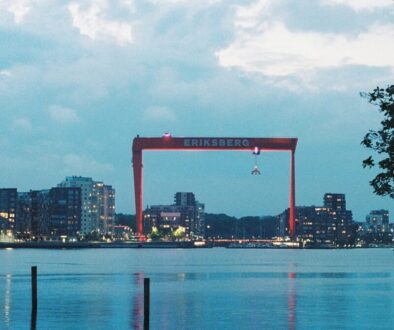How To Choose Your First Nordic Market
Last Updated on August 28, 2025 by Victoria Silber
One of the most common questions international businesses ask is where to start in the Nordics: how to choose your first Nordic market.
The region is often spoken about as one market, but in reality, Denmark, Sweden, Norway, and Finland each have their own business culture, industry strengths, and buyer behaviors.
Choosing the right entry point can be the difference between fast traction and months of frustration.
Mik from VAEKST has helped more than 150 international B2B companies launch in Scandinavia. His advice is clear: there is no single answer. The right choice depends on your industry, your ideal customer profile, and how you plan to approach the market.
Still, there are some patterns that can guide foreign companies when making the decision.
The importance of your ideal customer profile
Everything starts with your ICP — the ideal customer profile.
Which industries are you targeting? What size of company is your best fit? Who are the decision makers? Once you know this, the map becomes clearer.
Denmark, for example, has a particularly strong life sciences cluster. If you are selling into pharma or biotech, that may be the natural entry point.
Sweden is an industrial giant with strong manufacturing and engineering sectors. Finland has a deep technology base and a reputation for innovation.
Norway, with its oil, gas, and energy ecosystem, is attractive for companies in resources and sustainability.
The first step is not to ask “which country is easiest,” but “where are my customers most likely to be?”
Ease of access and cultural openness
If you don’t have a natural industry fit, Mik recommends Sweden or Finland as good first steps.
These two markets tend to be more open culturally and easier to access as a newcomer. Getting meetings is simpler, and companies are generally receptive to international collaboration.
Denmark and Norway, on the other hand, can be more selective.
It takes more effort to secure meetings, and buyers can be cautious with new suppliers. That doesn’t mean they are closed — far from it. But as a foreign company, you may need more persistence and credibility before being invited in.
For many businesses, starting in Sweden or Finland provides the chance to build a Nordic footprint more quickly.
Once you have references in the region, it becomes easier to expand into Denmark and Norway.
Size versus speed
Sweden is the largest of the four countries, both in population and in the number of companies.
That alone makes it an attractive starting point. More potential customers mean more chances to test messaging and book meetings. Statistically, the funnel is wider.
But bigger does not always mean faster. Swedish companies are consensus-driven. Decisions often involve multiple stakeholders and can take longer. By contrast, Danish companies may be harder to reach initially but may decide faster once they are interested.
Finland combines openness with a relatively direct communication style, which some foreign companies find easier to navigate.
The trade-off is real: do you want the biggest pool of prospects, or the quickest path from meeting to deal?
Physical proximity and travel
Practical considerations also matter.
If you plan to travel frequently, Copenhagen and Malmö are close together and well-connected internationally. Many foreign companies choose to set up in this corridor to cover both Denmark and southern Sweden. The ease of moving across the Øresund Bridge makes it possible to operate in two countries almost seamlessly.
Stockholm and Oslo require more travel, but both cities are major hubs in their own right.
Helsinki is a bit further, but the technology ecosystem there attracts many international businesses that find the trip worthwhile.
The point is that “the first market” is not only about customers, but also about how easily you can reach them and establish relationships.
Building credibility step by step
Mik notes that for many of his clients, the first Nordic market is not the end goal but a starting point.
Once you have a presence in Sweden, it becomes easier to approach prospects in Denmark and Norway. Buyers are reassured when they see that you already work with other Nordic companies. The same is true in reverse.
A reference in Copenhagen helps open doors in Stockholm.
That is why he often advises companies to start where it is easiest to get traction, even if it is not the largest or most profitable country at first.
Early wins create credibility, and credibility shortens sales cycles everywhere else in the region.
The danger of treating the Nordics as one market
A common mistake is to assume that Denmark, Sweden, Norway, and Finland are culturally interchangeable.
They are not. Mik warns that sales strategies copied directly from one to another often fail.
- Swedes value consensus and polite persistence.
- Danes prefer straightforward discussions and dislike being oversold.
- Norwegians are pragmatic and careful with risk.
- Finns are direct but value long-term trust.
Understanding these differences can save months of wasted effort. More importantly, it highlights why choosing the right entry point matters.
The same approach will not work equally well everywhere.
Test before committing
For companies unsure where to begin, a practical approach is to test all four in a limited way.
Run campaigns in parallel, see where you get the most traction, and then double down. This requires more upfront budget, but it reduces the risk of betting on the wrong horse. Within a few months, you will have clear data on which market responds best to your value proposition.
This data-driven approach also fits well with the Nordic mindset.
Buyers appreciate companies that come prepared, show understanding of their market, and have already proven success elsewhere.
Long-term vision
Ultimately, the goal is rarely to operate in just one Nordic country.
The region is small compared to Germany, France, or the United States. But the combination of high GDP per capita, global credibility, and strong willingness to pay for quality makes it attractive. The smart strategy is to think of the Nordics as a four-country journey.
Where you start matters, but the destination is regional presence.
Final thoughts
So how should a foreign company choose its first Nordic market?
The answer lies in a mix of industry fit, cultural openness, funnel size, and practical access. If your sector is concentrated in one country, start there. If not, Sweden or Finland often provide the easiest entry point. Denmark and Norway may take more persistence but offer strong buying power once trust is built.
What matters most is not the country itself, but the mindset you bring.
Do your research, understand your ideal customers, and be ready to adapt to cultural nuances. Think long term.
Your first step in Scandinavia should not be your last, but the beginning of a journey across a region that rewards patience, credibility, and quality.
If you’d like to hear Mik explain this in his own words, watch the clip from our conversation below.
For more insights on entering the Nordic markets, visit Export Playbook and explore The Nordic Entry™, my step-by-step guide to help your company avoid costly mistakes when expanding into Scandinavia.




